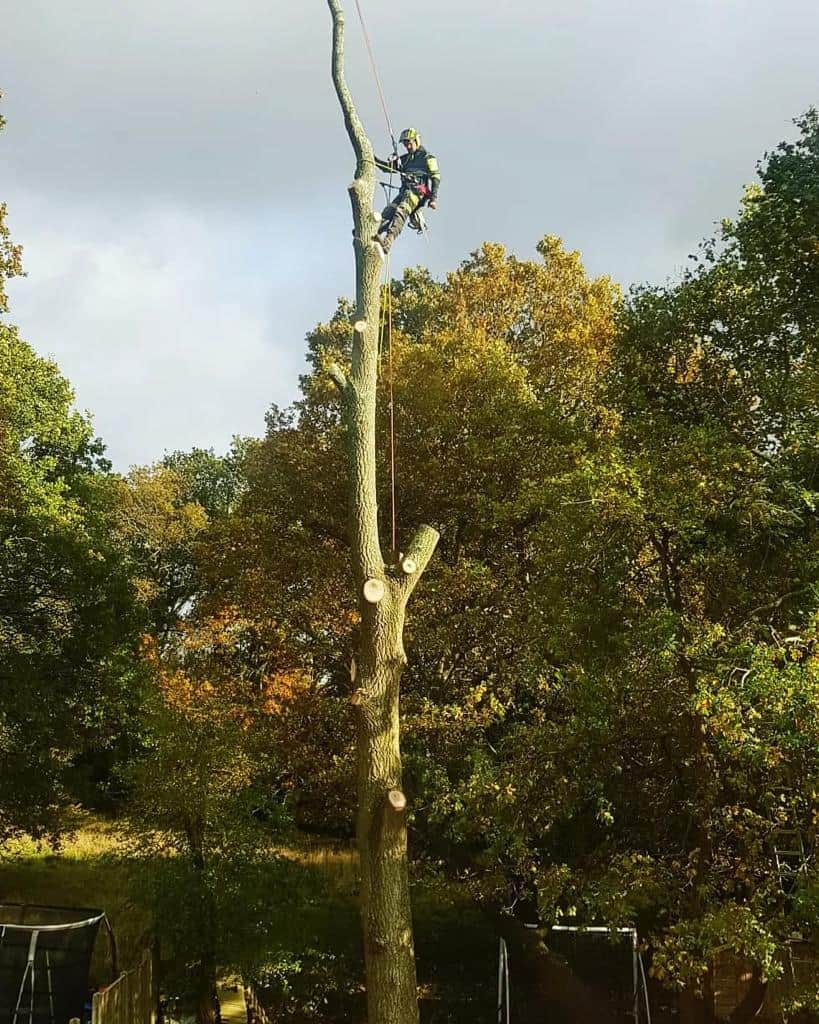Introduction
After a tree has been cut down, many property owners assume that the remaining stump will naturally decay over time. However, in some cases, tree stumps can continue to grow, producing new shoots and even regenerating into a small tree. Understanding how and why this happens is essential for homeowners who want to manage their landscape effectively.
In Thornbury, Gloucestershire, professional tree surgeons frequently deal with stump regrowth and can advise on the best methods for preventing unwanted new growth. This article explores why tree stumps can grow back, the risks associated with regrowth, and the most effective ways to remove stumps permanently.
Why Do Tree Stumps Regrow?
1. Dormant Root Systems
Even after a tree is felled, its root system often remains active beneath the ground. If the roots are still healthy and have access to water and nutrients, they may attempt to regenerate by sending up new shoots from the stump or even from the roots themselves.
2. Tree Species with Strong Regrowth Capabilities
Some tree species are more likely to regenerate than others. Certain deciduous trees have a natural ability to sprout new growth after being cut down. Common species known for their vigorous regrowth include:
- Willow
- Poplar
- Ash
- Sycamore
- Elm
These species have adaptive survival mechanisms, allowing them to recover from damage and re-establish themselves even after being cut.
3. Environmental Factors Encouraging Growth
If the stump is exposed to favourable conditions such as moisture, sunlight, and nutrient-rich soil, it is more likely to sprout new growth. Conversely, stumps that are left in shaded, dry areas with poor soil conditions may decay rather than regrow.
Risks of Tree Stump Regrowth
1. Unwanted Tree Growth
If left untreated, stump regrowth can lead to a cluster of new shoots developing into small trees. Over time, these new trees can become difficult to manage and may require additional removal efforts.
2. Damage to Surrounding Structures
Tree roots may continue to spread underground even after the tree has been cut down. This can cause potential damage to nearby structures, including:
- Driveways and pavements
- Garden walls and fences
- Underground pipes and utilities
3. Pest and Fungal Infestations
A decaying or partially regrown stump can attract pests such as termites, beetles, and fungi, which can spread to nearby trees or even to buildings. Fungal infections such as honey fungus can pose a serious risk to the health of other plants in your garden.
How to Prevent Stump Regrowth
1. Stump Grinding
Stump grinding is one of the most effective methods for removing a tree stump and preventing regrowth. A professional tree surgeon uses a powerful machine to grind the stump down below ground level, ensuring the remaining roots cannot produce new shoots. This method is both efficient and environmentally friendly.
2. Chemical Stump Treatment
Applying a professional-grade stump killer can help to stop regrowth by targeting the living tissue within the stump. However, this method requires careful application and patience, as it can take several weeks to fully prevent new shoots.
3. Complete Stump Removal
For stumps that are causing structural concerns or need to be eliminated entirely, full stump excavation may be necessary. This process involves removing both the stump and the root system, ensuring there is no chance of regrowth.
4. Natural Decay Acceleration
If the stump is not a significant concern, it can be left to decay naturally. However, this process can take several years. Homeowners can speed up decomposition by drilling holes into the stump and filling them with compost or a nitrogen-rich substance to break down the wood more quickly.
When to Contact a Professional Tree Surgeon
If you are dealing with a stubborn tree stump or are concerned about regrowth, seeking professional advice is the best course of action. A tree surgeon can assess the stump, recommend the most effective removal method, and ensure that any potential issues with roots are addressed.
Common reasons to call a tree surgeon include:
- Repeated sprouting from a tree stump
- Concerns about underground root damage
- Stumps causing obstructions or safety hazards
- Suspected fungal infections affecting nearby trees
Conclusion
While some tree stumps naturally decay over time, others can continue to grow, producing unwanted shoots and potentially causing structural damage. Certain tree species, environmental factors, and dormant root systems can contribute to stump regrowth.
For homeowners in Thornbury, Gloucestershire, dealing with a persistent tree stump, professional stump grinding or removal is the most effective way to ensure it does not grow back. Consulting a tree surgeon ensures the job is done safely and efficiently, preventing future problems while maintaining the health and appearance of your garden.
Call us on: 01454 802 782
Click here to find out more about EM Tree Surgery Thornbury
Click here to complete our contact form and see how we can help with your tree care needs.

